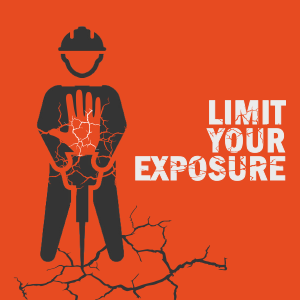
Hand-arm vibration (HAV) can be defined as the transfer of vibration from a tool to the hand and arm of the worker, and the adverse effect of HAV are defined as hand-arm vibration syndrome (HAVS). Workers in construction industry often work with power tools which generates both low and high frequency vibrations. Prolonged exposure to such vibrations causes disorders related to vascular, neural, and musculoskeletal system, collectively known as HAVS. By reviewing 20 cross sectional studies in 1997, National Institute of Occupational Safety and Health (NIOSH) found a positive correlation between high level of vibration exposure and HAVS. An estimated 1.45 million workers in the United State uses powered tools that generates HAV with the prevalence of HAVS ranges from 6% to 100%, with an average of about 50%. Usually, the first signs of the HAVS appears after minimum daily exposures for several hours each day for month or years, making it harder to monitor or control. To prevent HAVS and other health risks associated with HAV, European Union (EU) directives and International Organization of Standardization (ISO) recommends exposure action value (EAV) and exposure limit value (ELV) to limit daily HAV exposure of the worker working with powered tools. However, the process of measuring the HAV exposure is intrusive, requires high investment (i.e., expensive equipment) and significant manual effort. Moreover, currently there is no system which can continuously monitor the HAV exposure of the worker, which leads to infrequent and ineffective supervision. Thus, an inexpensive and automated solution to continuously monitor the HAV exposure can play a significant role in reducing the risks of HAVS among construction worker. This project proposes a framework to automatically measure the HAV exposure of the worker using smartwatch and machine learning algorithm. The embedded accelerometer of the smartwatch will be used to record real-time vibration data from workers hand. These data will be used to train machine learning models to detect what type of equipment is in use, and for how long. There are significant domain knowledge regarding the type and value of vibrations generated from various type of handheld equipment, which will be integrated into the system to measure real-time HAV exposure of the worker. A pilot study was conducted using two handheld tools (i.e., a power drill, and a table saw), and the result demonstrated potential of machine learning model in correctly detecting the type of equipment in use from the vibration data collected with the smartwatch. More diverse equipment and subject will be used in future for a robust prediction model. Mobile application will be integrated with the system to give alert to the worker when they reach the recommended level. Workers will be able to track and monitor their HAV exposure using the mobile application similar to a health monitoring app (e.g., Fitbit). Managers and supervisors will be able to better plan the standard work procedure in a way which minimizes the risk of HAVS. Moreover, a database containing long term HAV exposure data can be useful for medical researchers for a more comprehensive understanding regarding HAVS and other health risks associated with HAV. Thus, the proposed framework has significant potentials to be used as a monitoring and control tool, as well as a data source for future research development related to HAVS.
